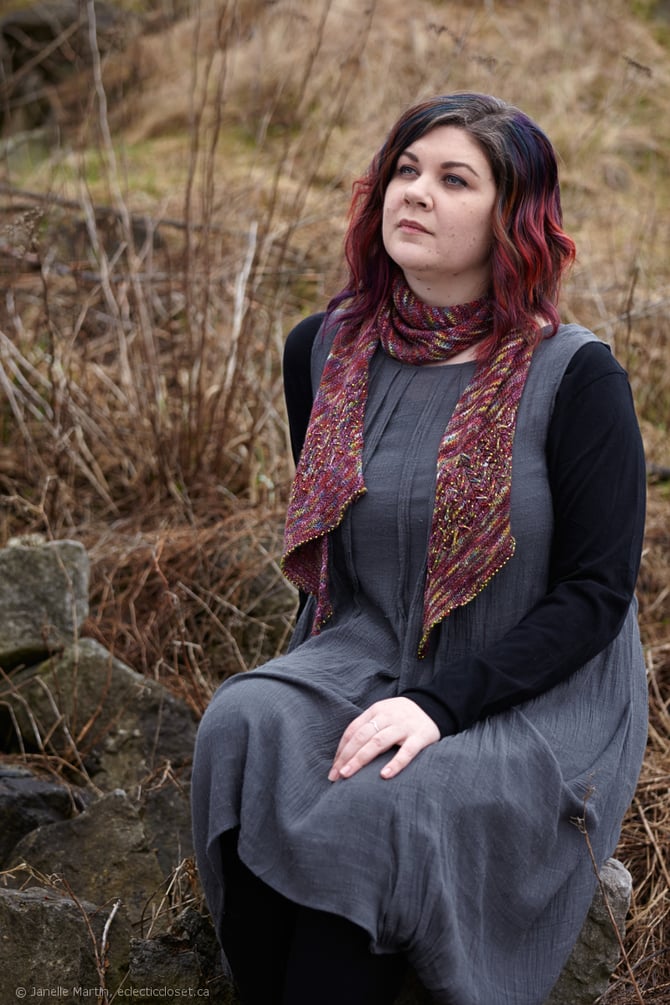
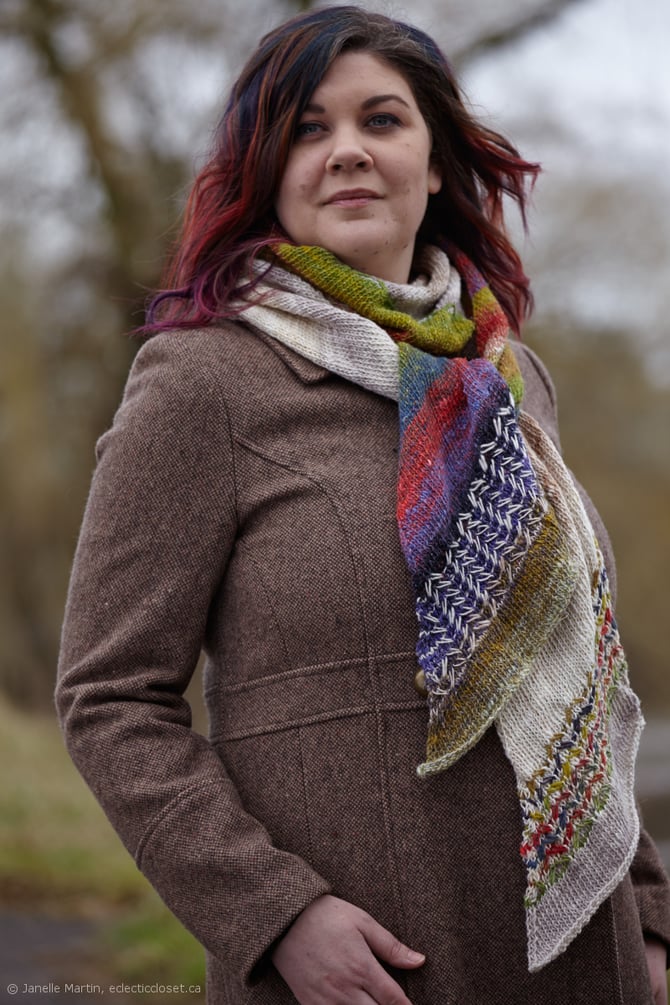
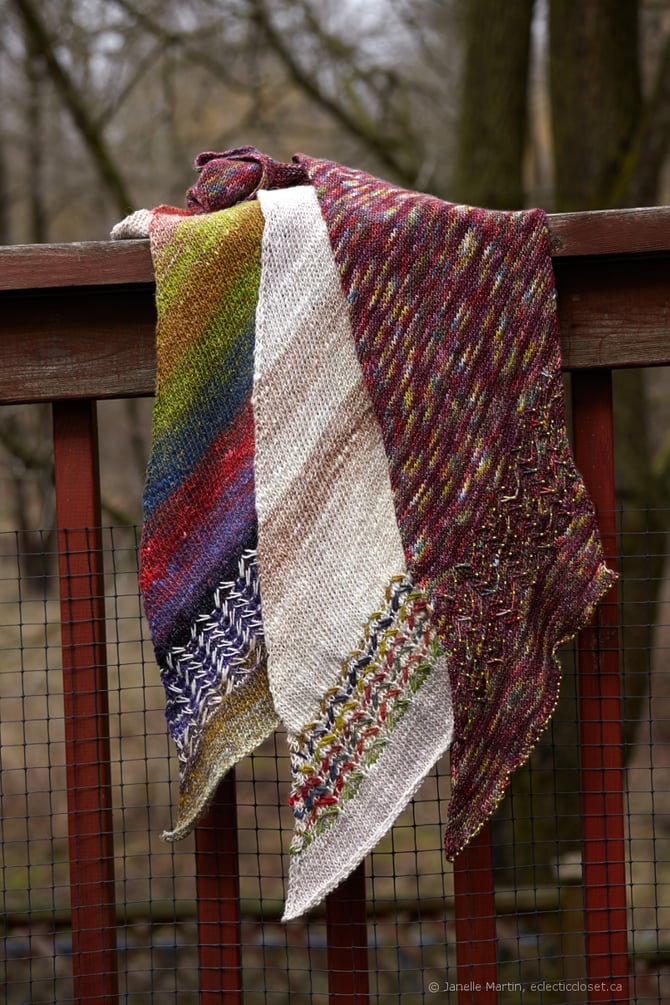
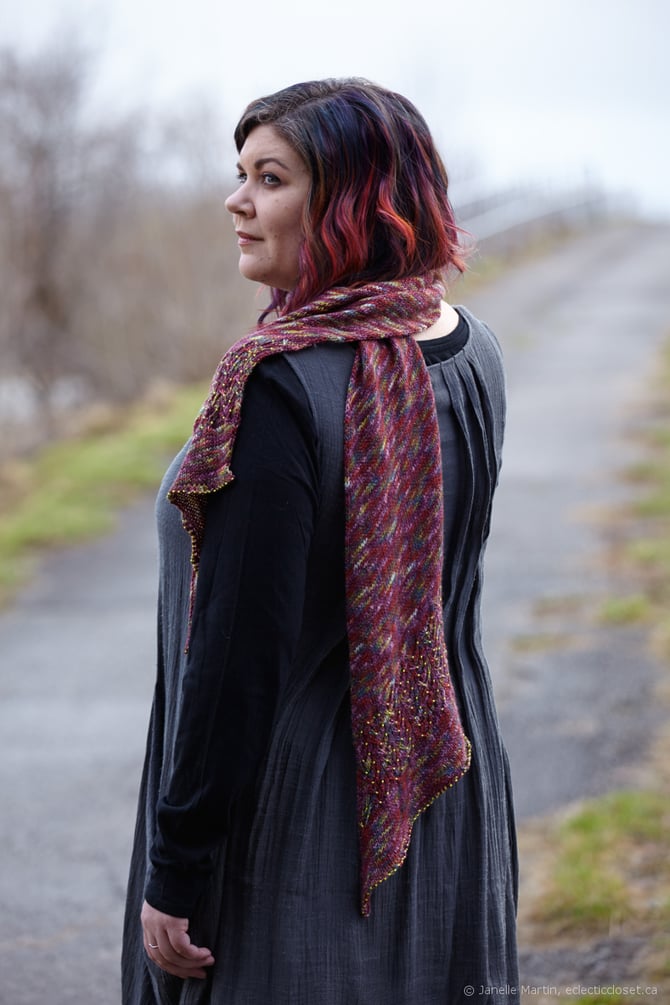
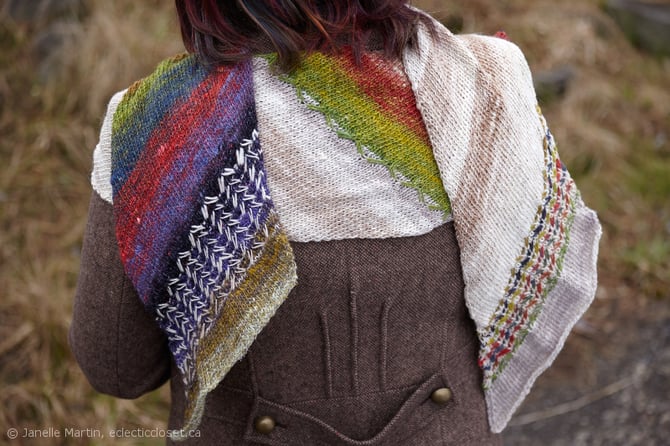
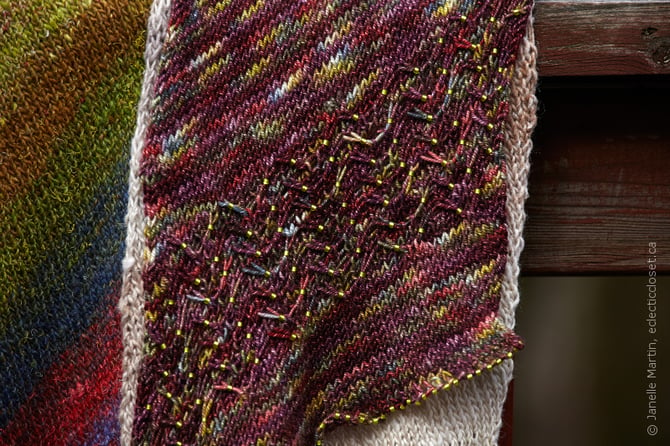
Palmaria Scarf
A companion piece to the Palmaria Shawl, part of the Northern Landscapes Collection, part 2. The slip stitch pattern was inspired by the waved ridges of seaweed left on the rocky shores at Cape Norman, Newfoundland. Palmaria palmate, often known as Dulse, is a seaweed commonly found in the north east Atlantic.
This piece is also an homage to the ever popular Bias ‘Before & After’ Scarf by Churchmouse Yarns and Teas.
Instructions are included for versions with and without beads and two colours vs a single colour.
Skills Required:
Other Tools:
Beading Tools (Optional):
Yarn: 400 (656) yards/366 (600) meters of fingering weight yarn that knits up to 8 sts/inch.
Shown In:
Purple sample: Indigodragonfly ‘Chameleon Sock’, (400 yards/365 meters; 63% superwash merino, 20% cashmere, 17% silk; 3.53 oz/100 grams).
Japanese Toho 8/0 Seed beads, Silver Lined Matte Lime Green (#tb8r24f) from www.beadfx.com
Two colour sample: Noro ‘Silk Garden Sock’, (328 yards/300 meters; 40% wool, 25% silk, 25%” nylon, 10% mohair; 3.53 oz/100 grams). 1 skein each S424 (Color A) and S269 (Color B).
This piece is also an homage to the ever popular Bias ‘Before & After’ Scarf by Churchmouse Yarns and Teas.
Instructions are included for versions with and without beads and two colours vs a single colour.
Skills Required:
- Working slipped stitches
- Working with crossed stitches
- Working with charts and written instructions
- Kitchener Stitch (Grafting)
- Blocking
- Working with beads (Optional)
Other Tools:
- Cable needle
- Glow line tape (to mark current row on charts/instructions).
- Tapestry needle
- Tpins and blocking wires
- Crochet hook and waste yarn for crochet cast-on
Beading Tools (Optional):
- 350 8/0 Seed Beads
- 0.6 mm crochet hook, 0.8 mm Fleegle Beader, Oral B Super Floss or your preferred method for adding beads to stitches
Yarn: 400 (656) yards/366 (600) meters of fingering weight yarn that knits up to 8 sts/inch.
Shown In:
Purple sample: Indigodragonfly ‘Chameleon Sock’, (400 yards/365 meters; 63% superwash merino, 20% cashmere, 17% silk; 3.53 oz/100 grams).
Japanese Toho 8/0 Seed beads, Silver Lined Matte Lime Green (#tb8r24f) from www.beadfx.com
Two colour sample: Noro ‘Silk Garden Sock’, (328 yards/300 meters; 40% wool, 25% silk, 25%” nylon, 10% mohair; 3.53 oz/100 grams). 1 skein each S424 (Color A) and S269 (Color B).

